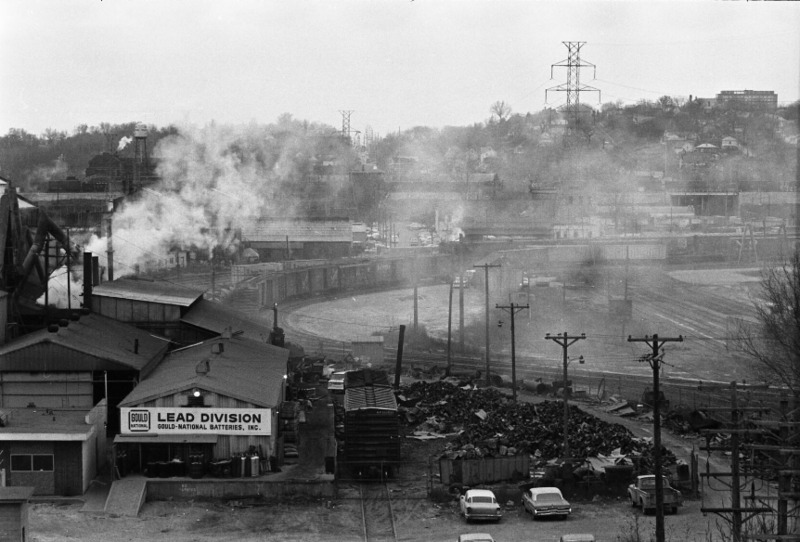Gould Batteries
Gould Batteries Incorporated of Omaha was formed in 1963 and began their operations as a secondary smelter of industrial lead from the moment the business opened its doors. Located on land previously developed by Aaron Ferer of Aaron Ferer & Sons to be a secondary smelting location, Gould Batteries experienced minimal delays in the early and transitional stages of its business (Fletcher, 2019). Gould Batteries was within extreme proximity of both the Union Pacific Shops and the ASARCO-Omaha lead refinery and participated in mutually beneficial trade agreements specifically with Union Pacific. Gould Batteries participated in a industry-boosting partnership with Union Pacific, purchasing smelting materials and having them shipped directly through Union Pacific. Union Pacific used this partnership to justify further investments in the Omaha local railway system, resulting in gradual increases to the total amount of track laid and the number of engines running (NH, 2012).
Gould Batteries Inc. participated in the smelting of industrial lead through a process the company called an electronic recycling program. This process used reverberatory and blast furnaces to smelt lead products, and emitted lead and other biproducts into the atmosphere from the company’s smokestacks. The Gould plant released lead particulates into the atmosphere from their smokestacks which fell on surrounding residential properties (Fletcher, 2019). With direct support from Union Pacific in regard to keeping operational costs of smelting lead as low as possible, Gould Batteries and other smelters are assumed to have been operating to the fullest capacities that their respective businesses could sustain. The smelting of industrial lead went uninhibited in favor of pursuing multiple corporations’ profit motives, whatever they may be (Fletcher, 2019).
Gould Batteries Inc. was a subsidiary of the national company Gould Electronics, which provided a number of services and products related to the sale and production of electronic devices and technology. The smelting of lead by any means is irregular for a Gould affiliated company; most businesses were focused on producing new products rather than breaking down old products. The actions of this subsidiary location in Omaha began raising alarm among the local population. Gould Batteries Inc did not receive the luxury of establishing itself in the Omaha business community when industrial lead was less commonly understood or discussed. The EPA was already involving itself by studying the emissions of the neighboring ASARCO plant in 1972, giving Gould Batteries only nine years to plant its roots before widespread community outrage was sparked (Fletcher, 2019). It is plausible to assume a lack of community investment and acceptance of Gould Batteries contributed to a mounting pressure campaign against industrial lead.
The Gould Batteries Inc refinery shut its doors in 1982 after nearly two decades of operation. The official decision to close this location is unknown, but Gould Electronics the national company was purchased by Nippon Mining in 1988, and all former Gould locations were closed by 2014. Upon examination of the former smelting plant by the EPA in 1999, a full-scale soil remediation effort was approved. After remediating the affected area, the land was entrusted to the City of Omaha who developed a public park in its place.
